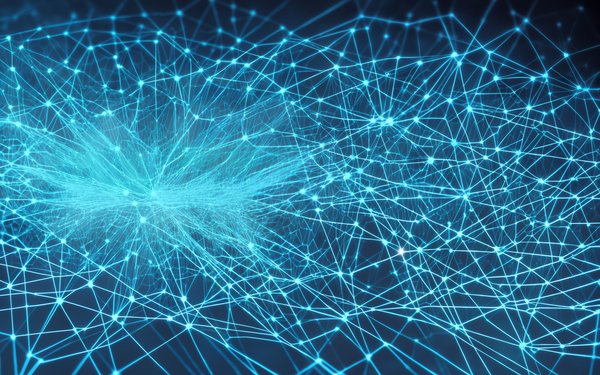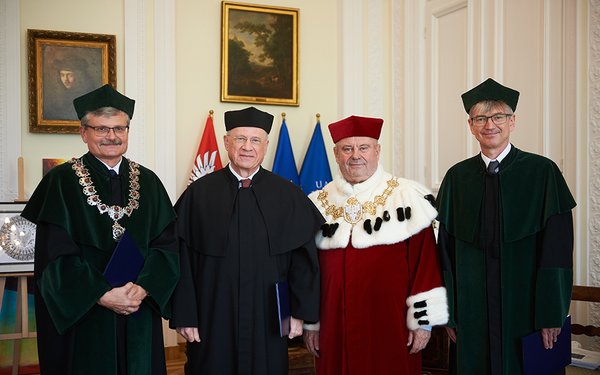News Faculty and all subsidiary organisations
Kármán Conference on Sustainable Computational Science & Engineering 2025
Talk: Using TRIXI.JL for Adaptively Coupling Multiphysics Problems
Snapshot: Minisymposium on multiphysics coupling at the CSE25 in Fort Worth
New paper: Generalized upwind SBP operators for nodal DG methods
PFAS: how to better clean soil from ‘forever chemicals’
Soil contaminated with harmful perfluorinated and polyfluorinated alkyl substances (PFAS) is difficult to clean, a complete remediation is often not possible. To improve the remediation process, researchers at the University of Augsburg are trialling various cleaning methods. Their work is now being financially supported by the Bavarian Research Foundation.
[University of Augsburg]
Snapshot: SNuBIC Fellows Meeting Augsburg
Exotic waves with concrete effects

New paper: TrixiParticles.jl: Particle-based multiphysics simulation in Julia
Ceramic matrix composites repairable for the first time
Researchers at the Institute for Materials Resource Management have developed a method to repair ceramic matrix composite components. Up until now, it was not possible to repair such matrix composites. The project “R4CMC – Repair Concepts for Reduced Rates of Virgin and Overhauled CMC” was funded by the Bavarian State Ministry for Economic Affairs, Regional Development and Energy.
[University of Augsburg]
Grant awarded: Scientific exchange with NPS on GPU-accelerated weather simulations
CHE ranking: good rating for physics and mathematics master's degree programs
The Faculty of Mathematics, Natural Sciences and Technology at the University of Augsburg can draw a positive balance: Its Master's degree courses in Mathematics and Physics have achieved excellent results in the new CHE University Ranking 2024. This nationwide comparison of degree courses and study conditions was published by the Center for Higher Education Development (CHE) in mid-December.
[University of Augsburg]
Upcoming: CAAPS event on Julia for scientific computing
, the CAAPS Connect event "Julia for Scientific Computing and Data Science" will take place. Everyone interesting in using Julia for scientific research is welcome to attend (not registration required). [High-Performance Scientific Computing]
New paper: High-order mesh generation with HOHQMesh
Snapshot: multiphysics coupling talk at the 19th MHD Days in Potsdam
International visibility for Augsburg as a place for research
j
[University of Augsburg]
New paper: High-order upwind SBP methods
Snapshot: Trixi.jl HPC performance tested for up to 61,440 MPI ranks
A Simple Method to Transform Soft Magnets into Hard Magnets
A team of researchers at the University of Augsburg has discovered a groundbreaking method to turn a soft magnet into a hard one using nothing more than moderate uniaxial stress - pressure applied in a single direction. Their findings were recently published in the prestigious journal Physical Review Letters.
[University of Augsburg]
New submission: Secure numerical simulations using fully homomorphic encryption
Workshop on Particle-based simulation methods 5-6 Nov 2024
You can find further information here. Looking forward to seeing you there! ♥️ [High-Performance Scientific Computing]
New lab member: Valentin Churavy
Snapshot: Adaptive multiphysics coupling in Trixi.jl
Snapshot: Fully homomorphic encryption with Julia
Young physics student Lea Kolb took part in the Nobel Laureate Conference in Lindau.
The young physics student Lea Kolb from the workgroup for organic semiconductors at the chair Experimental Physics IV took part in the 73. Nobel Laureate Conference in Lindau.
[Experimental Physics IV]

DFG funds Centre for Electron Microscopy at the University of Augsburg

New project researches “potholes” at the edge of space

HPSC Lab at JuliaCon 2024
New lab member: Simon Candelaresi
Snapshot: SPH simulation of the liquefaction of the Julia logo
2D single-phase simulation of the liquefaction of the Julia logo with TrixiParticles.jl.
[High-Performance Scientific Computing]New paper: Multirate time integration for CFD
Machine learning solves complex quantum problems
Due to a new method, artificial neural networks, as used in machine learning, will be able to be trained quicker so as to be able to solve complex problems in quantum mechanics. For example, previously unexplained properties of a special state of matter, the quantum spin liquid, can be calculated, something that has not been possible with any previous method to date. This has been made possible by a new optimisation method developed by the Institute of Physics.
[University of Augsburg]
New lab member: Ioana Lupu
High-Performance Scientific Computing Lab starts June 2024
Praise for Augsburg’s bachelor’s degree programmes by CHE Ranking

How life began: A molecular perspective

Honorary doctorate for Prof. Dieter Vollhardt
Prof. Dieter Vollhardt was awarded an honorary doctorate by the University of Warsaw last week in recognition of his scientific achievements and longstanding collaboration with theoretical physicists at the University of Warsaw.
[University of Augsburg]
AI-based control systems for machines, plants, and process chains
Over the next three years, the Bavarian research alliance “Intelligent Manufacturing Processes & Closed-Loop Production” (FORinFPRO) will be researching fundamental concepts for process-specific sensor and condition monitoring, as well as the data-based modelling, control, and optimisation of manufacturing processes. The project has been funded by the Bayerische Forschungsstiftung to the tune of around €2 million. Tobias Gotthardt, Bavarian State Secretary for Economic Affairs, Regional Development, and Energy, handed over the confirmation of funding today.
[University of Augsburg]
New measuring device should improve the development of vaccines

New Alexander von Humboldt Fellow at the University of Augsburg
Dr. Alexander Khort, a chemical engineer from the Royal Institute of Technology (KTH) Stockholm, is a new researcher at the Faculty of Mathematics, Natural Sciences and Technology at the University of Augsburg for two years. There he is working together with Prof. Dr.-Ing. Suelen Barg on developing new methods for producing smart nanomaterials, investigating their properties, and possible applications, and studying degradation behaviour.
[University of Augsburg]
Hall-effect uncovers hidden symmetry in spin-ice
Physicists from the University of Augsburg succeeded to distinguish chiral orders with similar magnetization but opposite sense of rotation through electrical measurements at low temperatures. This is relevant for fundamental research on complex magnets and with respect to possible applications for magnetic data storage. The results were published in the renowned journal Nature Physics.
[University of Augsburg]
